2022 前端常考手写面试题总结
- 2022-11-10 浙江
本文字数:11700 字
阅读完需:约 38 分钟
实现 JSON.parse
var json = '{"name":"cxk", "age":25}';var obj = eval("(" + json + ")");
此方法属于黑魔法,极易容易被 xss 攻击,还有一种new Function大同小异。
封装异步的 fetch,使用 async await 方式来使用
(async () => { class HttpRequestUtil { async get(url) { const res = await fetch(url); const data = await res.json(); return data; } async post(url, data) { const res = await fetch(url, { method: 'POST', headers: { 'Content-Type': 'application/json' }, body: JSON.stringify(data) }); const result = await res.json(); return result; } async put(url, data) { const res = await fetch(url, { method: 'PUT', headers: { 'Content-Type': 'application/json' }, data: JSON.stringify(data) }); const result = await res.json(); return result; } async delete(url, data) { const res = await fetch(url, { method: 'DELETE', headers: { 'Content-Type': 'application/json' }, data: JSON.stringify(data) }); const result = await res.json(); return result; } } const httpRequestUtil = new HttpRequestUtil(); const res = await httpRequestUtil.get('http://golderbrother.cn/'); console.log(res);})();
树形结构转成列表(处理菜单)
[ { id: 1, text: '节点1', parentId: 0, children: [ { id:2, text: '节点1_1', parentId:1 } ] }]转成[ { id: 1, text: '节点1', parentId: 0 //这里用0表示为顶级节点 }, { id: 2, text: '节点1_1', parentId: 1 //通过这个字段来确定子父级 } ...]
实现代码如下:
function treeToList(data) { let res = []; const dfs = (tree) => { tree.forEach((item) => { if (item.children) { dfs(item.children); delete item.children; } res.push(item); }); }; dfs(data); return res;}
Function.prototype.call
于call唯一不同的是,call()方法接受的是一个参数列表
Function.prototype.call = function(context = window, ...args) { if (typeof this !== 'function') { throw new TypeError('Type Error'); } const fn = Symbol('fn'); context[fn] = this;
const res = context[fn](...args); delete context[fn]; return res;}
参考:前端手写面试题详细解答
实现发布-订阅模式
class EventCenter{ // 1. 定义事件容器,用来装事件数组 let handlers = {}
// 2. 添加事件方法,参数:事件名 事件方法 addEventListener(type, handler) { // 创建新数组容器 if (!this.handlers[type]) { this.handlers[type] = [] } // 存入事件 this.handlers[type].push(handler) }
// 3. 触发事件,参数:事件名 事件参数 dispatchEvent(type, params) { // 若没有注册该事件则抛出错误 if (!this.handlers[type]) { return new Error('该事件未注册') } // 触发事件 this.handlers[type].forEach(handler => { handler(...params) }) }
// 4. 事件移除,参数:事件名 要删除事件,若无第二个参数则删除该事件的订阅和发布 removeEventListener(type, handler) { if (!this.handlers[type]) { return new Error('事件无效') } if (!handler) { // 移除事件 delete this.handlers[type] } else { const index = this.handlers[type].findIndex(el => el === handler) if (index === -1) { return new Error('无该绑定事件') } // 移除事件 this.handlers[type].splice(index, 1) if (this.handlers[type].length === 0) { delete this.handlers[type] } } }}
验证是否是邮箱
function isEmail(email) { var regx = /^([a-zA-Z0-9_\-])+@([a-zA-Z0-9_\-])+(\.[a-zA-Z0-9_\-])+$/; return regx.test(email);}
Function.prototype.bind
Function.prototype.bind = function(context, ...args) { if (typeof this !== 'function') { throw new Error("Type Error"); } // 保存this的值 var self = this;
return function F() { // 考虑new的情况 if(this instanceof F) { return new self(...args, ...arguments) } return self.apply(context, [...args, ...arguments]) }}
实现每隔一秒打印 1,2,3,4
// 使用闭包实现for (var i = 0; i < 5; i++) { (function(i) { setTimeout(function() { console.log(i); }, i * 1000); })(i);}// 使用 let 块级作用域for (let i = 0; i < 5; i++) { setTimeout(function() { console.log(i); }, i * 1000);}
手写常见排序
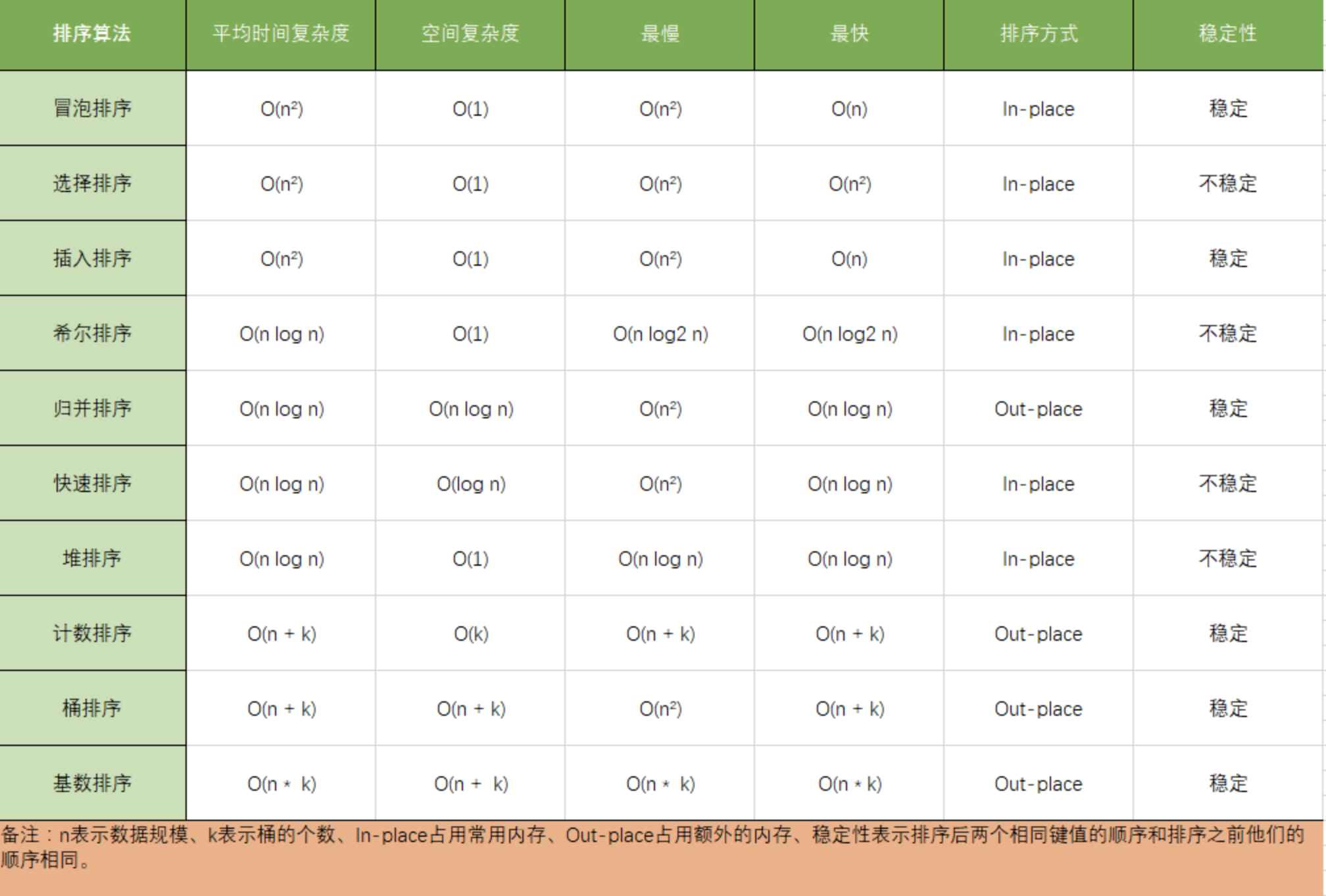
冒泡排序
冒泡排序的原理如下,从第一个元素开始,把当前元素和下一个索引元素进行比较。如果当前元素大,那么就交换位置,重复操作直到比较到最后一个元素,那么此时最后一个元素就是该数组中最大的数。下一轮重复以上操作,但是此时最后一个元素已经是最大数了,所以不需要再比较最后一个元素,只需要比较到
length - 1的位置。
function bubbleSort(list) { var n = list.length; if (!n) return [];
for (var i = 0; i < n; i++) { // 注意这里需要 n - i - 1 for (var j = 0; j < n - i - 1; j++) { if (list[j] > list[j + 1]) { var temp = list[j + 1]; list[j + 1] = list[j]; list[j] = temp; } } } return list;}
快速排序
快排的原理如下。随机选取一个数组中的值作为基准值,从左至右取值与基准值对比大小。比基准值小的放数组左边,大的放右边,对比完成后将基准值和第一个比基准值大的值交换位置。然后将数组以基准值的位置分为两部分,继续递归以上操作
ffunction quickSort(arr) { if (arr.length<=1){ return arr; } var baseIndex = Math.floor(arr.length/2);//向下取整,选取基准点 var base = arr.splice(baseIndex,1)[0];//取出基准点的值, // splice 通过删除或替换现有元素或者原地添加新的元素来修改数组,并以数组形式返回被修改的内容。此方法会改变原数组。 // slice方法返回一个新的数组对象,不会更改原数组 //这里不能直接base=arr[baseIndex],因为base代表的每次都删除的那个数 var left=[]; var right=[]; for (var i = 0; i<arr.length; i++){ // 这里的length是变化的,因为splice会改变原数组。 if (arr[i] < base){ left.push(arr[i]);//比基准点小的放在左边数组, } }else{ right.push(arr[i]);//比基准点大的放在右边数组, } return quickSort(left).concat([base],quickSort(right));}
选择排序
function selectSort(arr) { // 缓存数组长度 const len = arr.length; // 定义 minIndex,缓存当前区间最小值的索引,注意是索引 let minIndex; // i 是当前排序区间的起点 for (let i = 0; i < len - 1; i++) { // 初始化 minIndex 为当前区间第一个元素 minIndex = i; // i、j分别定义当前区间的上下界,i是左边界,j是右边界 for (let j = i; j < len; j++) { // 若 j 处的数据项比当前最小值还要小,则更新最小值索引为 j if (arr[j] < arr[minIndex]) { minIndex = j; } } // 如果 minIndex 对应元素不是目前的头部元素,则交换两者 if (minIndex !== i) { [arr[i], arr[minIndex]] = [arr[minIndex], arr[i]]; } } return arr;}// console.log(selectSort([3, 6, 2, 4, 1]));
插入排序
function insertSort(arr) { for (let i = 1; i < arr.length; i++) { let j = i; let target = arr[j]; while (j > 0 && arr[j - 1] > target) { arr[j] = arr[j - 1]; j--; } arr[j] = target; } return arr;}// console.log(insertSort([3, 6, 2, 4, 1]));
递归反转链表
// node节点class Node { constructor(element,next) { this.element = element this.next = next } }
class LinkedList { constructor() { this.head = null // 默认应该指向第一个节点 this.size = 0 // 通过这个长度可以遍历这个链表 } // 增加O(n) add(index,element) { if(arguments.length === 1) { // 向末尾添加 element = index // 当前元素等于传递的第一项 index = this.size // 索引指向最后一个元素 } if(index < 0 || index > this.size) { throw new Error('添加的索引不正常') } if(index === 0) { // 直接找到头部 把头部改掉 性能更好 let head = this.head this.head = new Node(element,head) } else { // 获取当前头指针 let current = this.head // 不停遍历 直到找到最后一项 添加的索引是1就找到第0个的next赋值 for (let i = 0; i < index-1; i++) { // 找到它的前一个 current = current.next } // 让创建的元素指向上一个元素的下一个 // 看图理解next层级 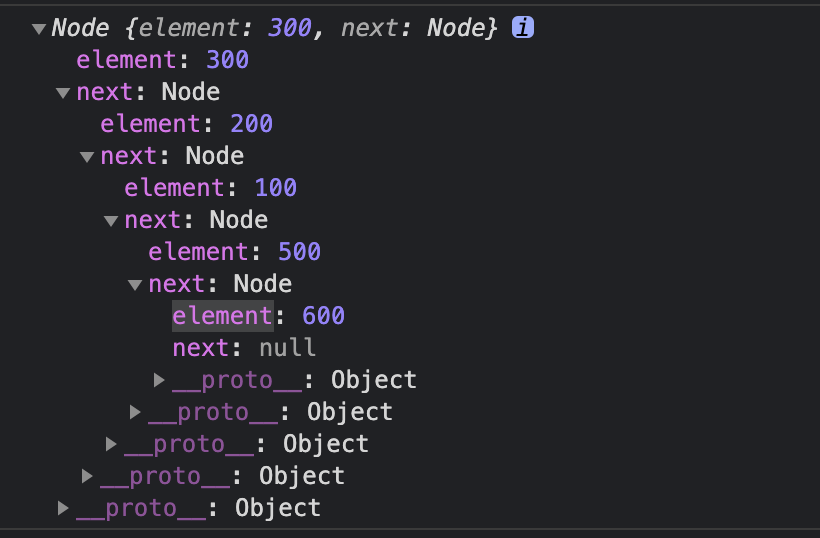 current.next = new Node(element,current.next) // 让当前元素指向下一个元素的next }
this.size++; } // 删除O(n) remove(index) { if(index < 0 || index >= this.size) { throw new Error('删除的索引不正常') } this.size-- if(index === 0) { let head = this.head this.head = this.head.next // 移动指针位置
return head // 返回删除的元素 }else { let current = this.head for (let i = 0; i < index-1; i++) { // index-1找到它的前一个 current = current.next } let returnVal = current.next // 返回删除的元素 // 找到待删除的指针的上一个 current.next.next // 如删除200, 100=>200=>300 找到200的上一个100的next的next为300,把300赋值给100的next即可 current.next = current.next.next
return returnVal } } // 查找O(n) get(index) { if(index < 0 || index >= this.size) { throw new Error('查找的索引不正常') } let current = this.head for (let i = 0; i < index; i++) { current = current.next } return current } reverse() { const reverse = head=>{ if(head == null || head.next == null) { return head } let newHead = reverse(head.next) // 从这个链表的最后一个开始反转,让当前下一个元素的next指向自己,自己指向null //  // 刚开始反转的是最后两个 head.next.next = head head.next = null
return newHead } return reverse(this.head) }}
let ll = new LinkedList()
ll.add(1)ll.add(2)ll.add(3)ll.add(4)
// console.dir(ll,{depth: 1000})
console.log(ll.reverse())
图片懒加载
// <img src="default.png" data-src="https://xxxx/real.png">function isVisible(el) { const position = el.getBoundingClientRect() const windowHeight = document.documentElement.clientHeight // 顶部边缘可见 const topVisible = position.top > 0 && position.top < windowHeight; // 底部边缘可见 const bottomVisible = position.bottom < windowHeight && position.bottom > 0; return topVisible || bottomVisible;}
function imageLazyLoad() { const images = document.querySelectorAll('img') for (let img of images) { const realSrc = img.dataset.src if (!realSrc) continue if (isVisible(img)) { img.src = realSrc img.dataset.src = '' } }}
// 测试window.addEventListener('load', imageLazyLoad)window.addEventListener('scroll', imageLazyLoad)// orwindow.addEventListener('scroll', throttle(imageLazyLoad, 1000))
分片思想解决大数据量渲染问题
题目描述: 渲染百万条结构简单的大数据时 怎么使用分片思想优化渲染
let ul = document.getElementById("container");// 插入十万条数据let total = 100000;// 一次插入 20 条let once = 20;//总页数let page = total / once;//每条记录的索引let index = 0;//循环加载数据function loop(curTotal, curIndex) { if (curTotal <= 0) { return false; } //每页多少条 let pageCount = Math.min(curTotal, once); window.requestAnimationFrame(function () { for (let i = 0; i < pageCount; i++) { let li = document.createElement("li"); li.innerText = curIndex + i + " : " + ~~(Math.random() * total); ul.appendChild(li); } loop(curTotal - pageCount, curIndex + pageCount); });}loop(total, index);
扩展思考 :对于大数据量的简单 dom 结构渲染可以用分片思想解决 如果是复杂的 dom 结构渲染如何处理?
这时候就需要使用虚拟列表了,虚拟列表和虚拟表格在日常项目使用还是很多的
请实现一个 add 函数,满足以下功能
add(1); // 1add(1)(2); // 3add(1)(2)(3);// 6add(1)(2, 3); // 6add(1, 2)(3); // 6add(1, 2, 3); // 6
function add(...args) { // 在内部声明一个函数,利用闭包的特性保存并收集所有的参数值 let fn = function(...newArgs) { return add.apply(null, args.concat(newArgs)) }
// 利用toString隐式转换的特性,当最后执行时隐式转换,并计算最终的值返回 fn.toString = function() { return args.reduce((total,curr)=> total + curr) }
return fn}
考点:
使用闭包, 同时要对 JavaScript 的作用域链(原型链)有深入的理解
重写函数的
toSting()方法
// 测试,调用toString方法触发求值
add(1).toString(); // 1add(1)(2).toString(); // 3add(1)(2)(3).toString();// 6add(1)(2, 3).toString(); // 6add(1, 2)(3).toString(); // 6add(1, 2, 3).toString(); // 6
二叉树搜索
// 二叉搜索树
class Node { constructor(element, parent) { this.parent = parent // 父节点 this.element = element // 当前存储内容 this.left = null // 左子树 this.right = null // 右子树 }}
class BST { constructor(compare) { this.root = null // 树根 this.size = 0 // 树中的节点个数
this.compare = compare || this.compare } compare(a,b) { return a - b } add(element) { if(this.root === null) { this.root = new Node(element, null) this.size++ return } // 获取根节点 用当前添加的进行判断 放左边还是放右边 let currentNode = this.root let compare let parent = null while (currentNode) { compare = this.compare(element, currentNode.element) parent = currentNode // 先将父亲保存起来 // currentNode要不停的变化 if(compare > 0) { currentNode = currentNode.right } else if(compare < 0) { currentNode = currentNode.left } else { currentNode.element = element // 相等时 先覆盖后续处理 } }
let newNode = new Node(element, parent) if(compare > 0) { parent.right = newNode } else if(compare < 0) { parent.left = newNode }
this.size++ }}
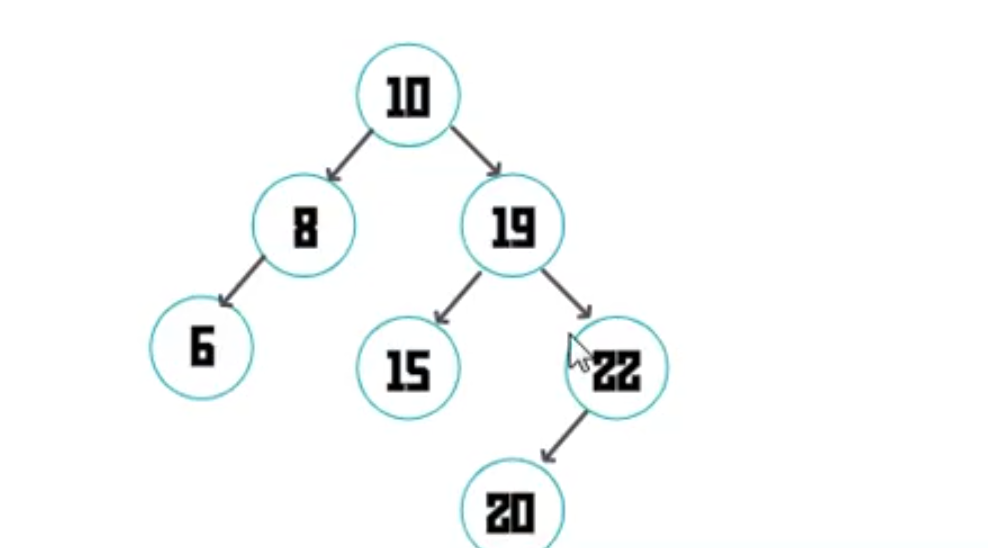
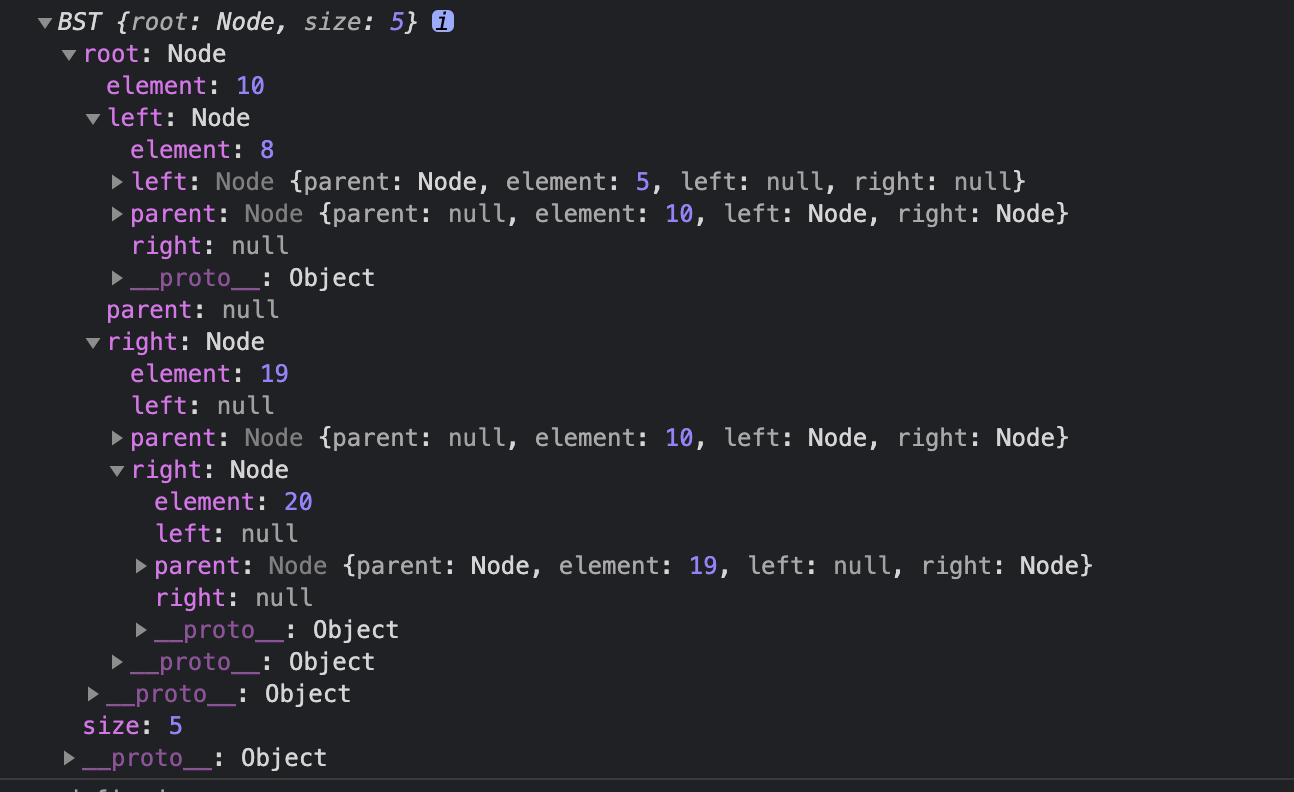
// 测试var bst = new BST((a,b)=>b.age-a.age) // 模拟sort方法
bst.add({age: 10})bst.add({age: 8})bst.add({age:19})bst.add({age:20})bst.add({age: 5})
console.log(bst)
手写 Promise.then
then 方法返回一个新的 promise 实例,为了在 promise 状态发生变化时(resolve / reject 被调用时)再执行 then 里的函数,我们使用一个 callbacks 数组先把传给 then 的函数暂存起来,等状态改变时再调用。
**那么,怎么保证后一个 **then** 里的方法在前一个 ****then**(可能是异步)结束之后再执行呢? 我们可以将传给 then 的函数和新 promise 的 resolve 一起 push 到前一个 promise 的 callbacks 数组中,达到承前启后的效果:
承前:当前一个
promise完成后,调用其resolve变更状态,在这个resolve里会依次调用callbacks里的回调,这样就执行了then里的方法了启后:上一步中,当
then里的方法执行完成后,返回一个结果,如果这个结果是个简单的值,就直接调用新promise的resolve,让其状态变更,这又会依次调用新promise的callbacks数组里的方法,循环往复。。如果返回的结果是个promise,则需要等它完成之后再触发新promise的resolve,所以可以在其结果的then里调用新promise的resolve
then(onFulfilled, onReject){ // 保存前一个promise的this const self = this; return new MyPromise((resolve, reject) => { // 封装前一个promise成功时执行的函数 let fulfilled = () => { try{ const result = onFulfilled(self.value); // 承前 return result instanceof MyPromise? result.then(resolve, reject) : resolve(result); //启后 }catch(err){ reject(err) } } // 封装前一个promise失败时执行的函数 let rejected = () => { try{ const result = onReject(self.reason); return result instanceof MyPromise? result.then(resolve, reject) : reject(result); }catch(err){ reject(err) } } switch(self.status){ case PENDING: self.onFulfilledCallbacks.push(fulfilled); self.onRejectedCallbacks.push(rejected); break; case FULFILLED: fulfilled(); break; case REJECT: rejected(); break; } }) }
注意:
连续多个
then里的回调方法是同步注册的,但注册到了不同的callbacks数组中,因为每次then都返回新的promise实例(参考上面的例子和图)注册完成后开始执行构造函数中的异步事件,异步完成之后依次调用
callbacks数组中提前注册的回调
异步串行 | 异步并行
// 字节面试题,实现一个异步加法function asyncAdd(a, b, callback) { setTimeout(function () { callback(null, a + b); }, 500);}
// 解决方案// 1. promisifyconst promiseAdd = (a, b) => new Promise((resolve, reject) => { asyncAdd(a, b, (err, res) => { if (err) { reject(err) } else { resolve(res) } })})
// 2. 串行处理async function serialSum(...args) { return args.reduce((task, now) => task.then(res => promiseAdd(res, now)), Promise.resolve(0))}
// 3. 并行处理async function parallelSum(...args) { if (args.length === 1) return args[0] const tasks = [] for (let i = 0; i < args.length; i += 2) { tasks.push(promiseAdd(args[i], args[i + 1] || 0)) } const results = await Promise.all(tasks) return parallelSum(...results)}
// 测试(async () => { console.log('Running...'); const res1 = await serialSum(1, 2, 3, 4, 5, 8, 9, 10, 11, 12) console.log(res1) const res2 = await parallelSum(1, 2, 3, 4, 5, 8, 9, 10, 11, 12) console.log(res2) console.log('Done');})()
二叉树层次遍历
// 二叉树层次遍历
class Node { constructor(element, parent) { this.parent = parent // 父节点 this.element = element // 当前存储内容 this.left = null // 左子树 this.right = null // 右子树 }}
class BST { constructor(compare) { this.root = null // 树根 this.size = 0 // 树中的节点个数
this.compare = compare || this.compare } compare(a,b) { return a - b } add(element) { if(this.root === null) { this.root = new Node(element, null) this.size++ return } // 获取根节点 用当前添加的进行判断 放左边还是放右边 let currentNode = this.root let compare let parent = null while (currentNode) { compare = this.compare(element, currentNode.element) parent = currentNode // 先将父亲保存起来 // currentNode要不停的变化 if(compare > 0) { currentNode = currentNode.right } else if(compare < 0) { currentNode = currentNode.left } else { currentNode.element = element // 相等时 先覆盖后续处理 } }
let newNode = new Node(element, parent) if(compare > 0) { parent.right = newNode } else if(compare < 0) { parent.left = newNode }
this.size++ } // 层次遍历 队列 levelOrderTraversal(visitor) { if(this.root == null) { return } let stack = [this.root] let index = 0 // 指针 指向0 let currentNode while (currentNode = stack[index++]) { // 反转二叉树 let tmp = currentNode.left currentNode.left = currentNode.right currentNode.right = tmp visitor.visit(currentNode.element) if(currentNode.left) { stack.push(currentNode.left) } if(currentNode.right) { stack.push(currentNode.right) } } }}
// 测试var bst = new BST((a,b)=>a.age-b.age) // 模拟sort方法
// 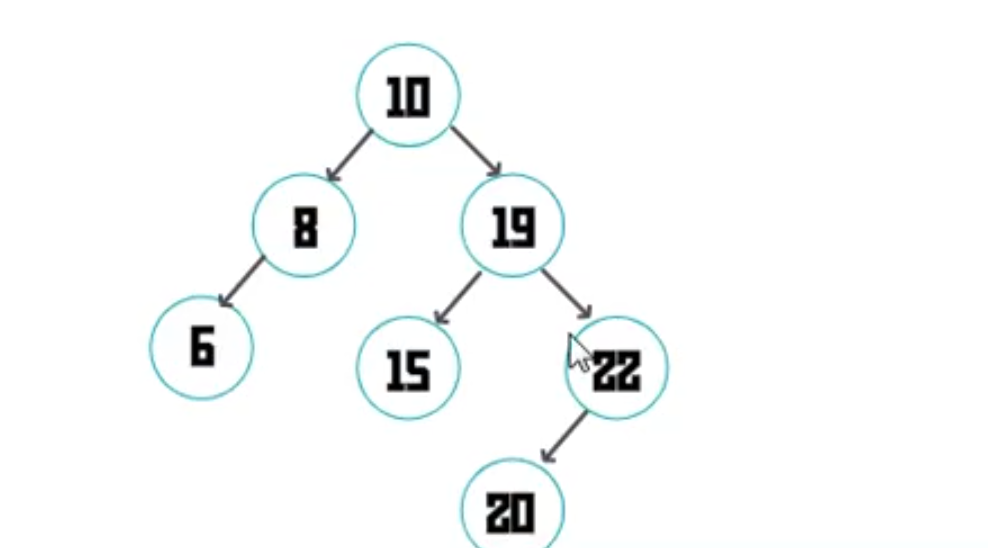// 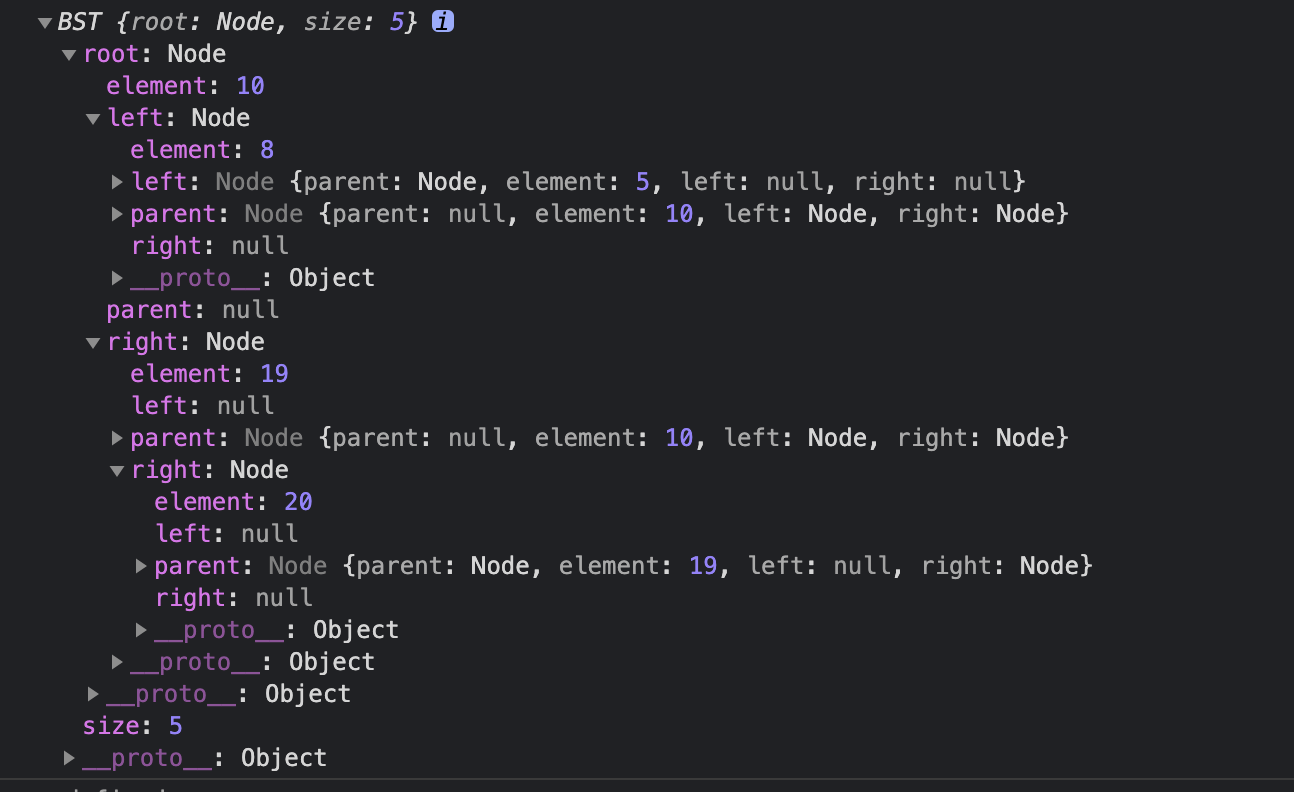bst.add({age: 10})bst.add({age: 8})bst.add({age:19})bst.add({age:6})bst.add({age: 15})bst.add({age: 22})bst.add({age: 20})
// 使用访问者模式class Visitor { constructor() { this.visit = function (elem) { elem.age = elem.age*2 } }}
// console.log(bst.levelOrderTraversal(new Visitor()))
实现 instanceOf
// 模拟 instanceoffunction instance_of(L, R) { //L 表示左表达式,R 表示右表达式 var O = R.prototype; // 取 R 的显示原型 L = L.__proto__; // 取 L 的隐式原型 while (true) { if (L === null) return false; if (O === L) // 这里重点:当 O 严格等于 L 时,返回 true return true; L = L.__proto__; }}
怎么在制定数据源里面生成一个长度为 n 的不重复随机数组 能有几种方法 时间复杂度多少(字节)
第一版 时间复杂度为 O(n^2)
function getTenNum(testArray, n) { let result = []; for (let i = 0; i < n; ++i) { const random = Math.floor(Math.random() * testArray.length); const cur = testArray[random]; if (result.includes(cur)) { i--; break; } result.push(cur); } return result;}const testArray = [1, 2, 3, 4, 5, 6, 7, 8, 9, 10, 11, 12, 13, 14];const resArr = getTenNum(testArray, 10);
第二版 标记法 / 自定义属性法 时间复杂度为 O(n)
function getTenNum(testArray, n) { let hash = {}; let result = []; let ranNum = n; while (ranNum > 0) { const ran = Math.floor(Math.random() * testArray.length); if (!hash[ran]) { hash[ran] = true; result.push(ran); ranNum--; } } return result;}const testArray = [1, 2, 3, 4, 5, 6, 7, 8, 9, 10, 11, 12, 13, 14];const resArr = getTenNum(testArray, 10);
第三版 交换法 时间复杂度为 O(n)
function getTenNum(testArray, n) { const cloneArr = [...testArray]; let result = []; for (let i = 0; i < n; i++) { debugger; const ran = Math.floor(Math.random() * (cloneArr.length - i)); result.push(cloneArr[ran]); cloneArr[ran] = cloneArr[cloneArr.length - i - 1]; } return result;}const testArray = [1, 2, 3, 4, 5, 6, 7, 8, 9, 10, 11, 12, 13, 14];const resArr = getTenNum(testArray, 14);
值得一提的是操作数组的时候使用交换法 这种思路在算法里面很常见
最终版 边遍历边删除 时间复杂度为 O(n)
function getTenNum(testArray, n) { const cloneArr = [...testArray]; let result = []; for (let i = 0; i < n; ++i) { const random = Math.floor(Math.random() * cloneArr.length); const cur = cloneArr[random]; result.push(cur); cloneArr.splice(random, 1); } return result;}const testArray = [1, 2, 3, 4, 5, 6, 7, 8, 9, 10, 11, 12, 13, 14];const resArr = getTenNum(testArray, 14);
实现 add(1)(2)(3)
函数柯里化概念: 柯里化(Currying)是把接受多个参数的函数转变为接受一个单一参数的函数,并且返回接受余下的参数且返回结果的新函数的技术。
1)粗暴版
function add (a) {return function (b) { return function (c) { return a + b + c; }}}console.log(add(1)(2)(3)); // 6
2)柯里化解决方案
参数长度固定
var add = function (m) { var temp = function (n) { return add(m + n); } temp.toString = function () { return m; } return temp;};console.log(add(3)(4)(5)); // 12console.log(add(3)(6)(9)(25)); // 43
对于 add(3)(4)(5),其执行过程如下:
先执行 add(3),此时 m=3,并且返回 temp 函数;
执行 temp(4),这个函数内执行 add(m+n),n 是此次传进来的数值 4,m 值还是上一步中的 3,所以 add(m+n)=add(3+4)=add(7),此时 m=7,并且返回 temp 函数
执行 temp(5),这个函数内执行 add(m+n),n 是此次传进来的数值 5,m 值还是上一步中的 7,所以 add(m+n)=add(7+5)=add(12),此时 m=12,并且返回 temp 函数
由于后面没有传入参数,等于返回的 temp 函数不被执行而是打印,了解 JS 的朋友都知道对象的 toString 是修改对象转换字符串的方法,因此代码中 temp 函数的 toString 函数 return m 值,而 m 值是最后一步执行函数时的值 m=12,所以返回值是 12。
参数长度不固定
function add (...args) { //求和 return args.reduce((a, b) => a + b)}function currying (fn) { let args = [] return function temp (...newArgs) { if (newArgs.length) { args = [ ...args, ...newArgs ] return temp } else { let val = fn.apply(this, args) args = [] //保证再次调用时清空 return val } }}let addCurry = currying(add)console.log(addCurry(1)(2)(3)(4, 5)()) //15console.log(addCurry(1)(2)(3, 4, 5)()) //15console.log(addCurry(1)(2, 3, 4, 5)()) //15
还未添加个人签名 2022-07-31 加入
还未添加个人简介










评论